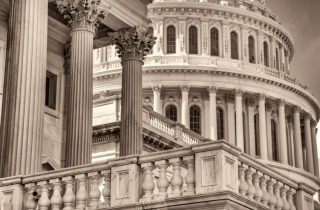Chemical Policy Reform
At a glance
We are exposed to a mix of hundreds of chemicals from multiple sources daily. Scientists have identified over 300 chemicals in people, showing that what’s around us also gets in us. These chemicals are regulated by a constellation of federal agencies including the Environmental Protection Agency (EPA), which administers the Toxic Substances Control Act (TSCA).
Shockingly, of the over 85,000 chemicals now registered with the EPA for use in commerce, only five have been regulated under TSCA. While TSCA has been a spectacular failure when it comes to protecting the public from toxic chemicals, a newly passed law provides an opportunity for the agency to do better. Vigilance and pressure from public health advocates will be necessary to fulfill that promise. That’s why BCPP advocates for better regulation of toxic chemicals and watchdogs the implementation of this keystone public health legislation.
Science summary
In 2016, the US Congress passed the first law to amend the TSCA in 37 years, “The Frank R. Lautenberg Chemical Safety for the 21st Century Act”. In the last four decades, toxicology science has advanced exponentially, including the consideration of how we are exposed to multiple chemicals at the same time from multiple sources, that exposures at different points in our lifetime (including prenatally) can have very different health outcomes, and the unique characteristics of chemicals that disrupt the hormone system.
Read More
LCSA calls on the EPA to consider the National Academy of Sciences recommendations on chemical safety testing. This includes consideration of exposures to mixtures and the unique characteristics of chemicals that disrupt our hormone system (particularly important for breast cancer). The first ten chemicals to be considered under the new law include four that have been linked to breast cancer: 1,4-Dioxane; Carbon Tetrachloride; Methylene Chloride; and Trichloroethylene. It is vital that regulators use modern science in assessing the safety of these and future chemicals that the EPA will review. BBPP works with scientists, advocates and policy makers to ensure that the best available science is used in the safety assessment of these and future chemicals regulated under this new law to ensure that the public is adequately protected.
Regulatory framework
While recent attention has focused on reform of TSCA, several agencies are tasked with protecting the public from exposure to toxic chemicals. These include the EPA (air, water, pesticides, industrial chemicals), the Food and Drug Administration (FDA) (personal care products, food and food packaging, medical devices), the Consumer Product Safety Commission (CPSC) (toys, child care items, cleaning products, other consumer products) and the Occupational Safety and Health Administration (OSHA) (worker exposures).
TSCA is an overarching and pivotal law, however it is still only one piece of the puzzle. This constellation of agency authorities and jurisdictions result in a number of challenges including overlapping authorities and a lack of coordination and information sharing, resulting in a failure to protect the American public from exposures of concern. The recent passage of “The Frank R. Lautenberg Chemical Safety for the 21st Century Act” (LCSA) provides an opportunity for the EPA to do a better job protecting public health. This won’t happen without significant and sustained pressure from organizations like BCPP and the public.
History of TSCA
There are over 85,000 chemicals now registered with the EPA for use in commerce. Shockingly, of the 62,000 chemicals that were on the market when the law passed in 1976, only 5 have been regulated under TSCA. Under the old law, the EPA could not even regulate asbestos, a known carcinogen that kills thousands of people each year.
After years of debate and negotiations, U.S. Congress passed a 2016 law amending the failed TSCA for the first time since the original bill became law in 1976. Unfortunately, LCSA fell short of the promise of fully health-protective reform and as a result Breast Cancer Prevention Partners opposed this legislation.
While not all that we wanted, LCSA does provide the EPA an opportunity to do a better job with more authority, responsibility and resources to protect the public from exposure to toxic chemicals. Vigilance and pressure from public health advocates will be necessary to fulfill that promise. BCPP advocates for the selection, assessment, and regulation of particular chemicals, and watchdogs the implementation of this key public health legislation. Specifically, we make sure that:
- The enactment protects vulnerable populations from unsafe chemical exposures;
- Interpretation of the safety standard “unreasonable risk of harm to health or the environment” strongly protects public health through a precautionary approach;
- The EPA uses the full scope of science, not just industry sponsored science; and
- A lack of information, or data gap, does not equate to evidence of a chemical’s safety.
In addition to securing the strongest implementation possible, BCPP vigilantly identifies and works to defeat chemical industry efforts to weaken the implementation of this new law both within Congress and the EPA.
Types: Article, Fact Sheet




